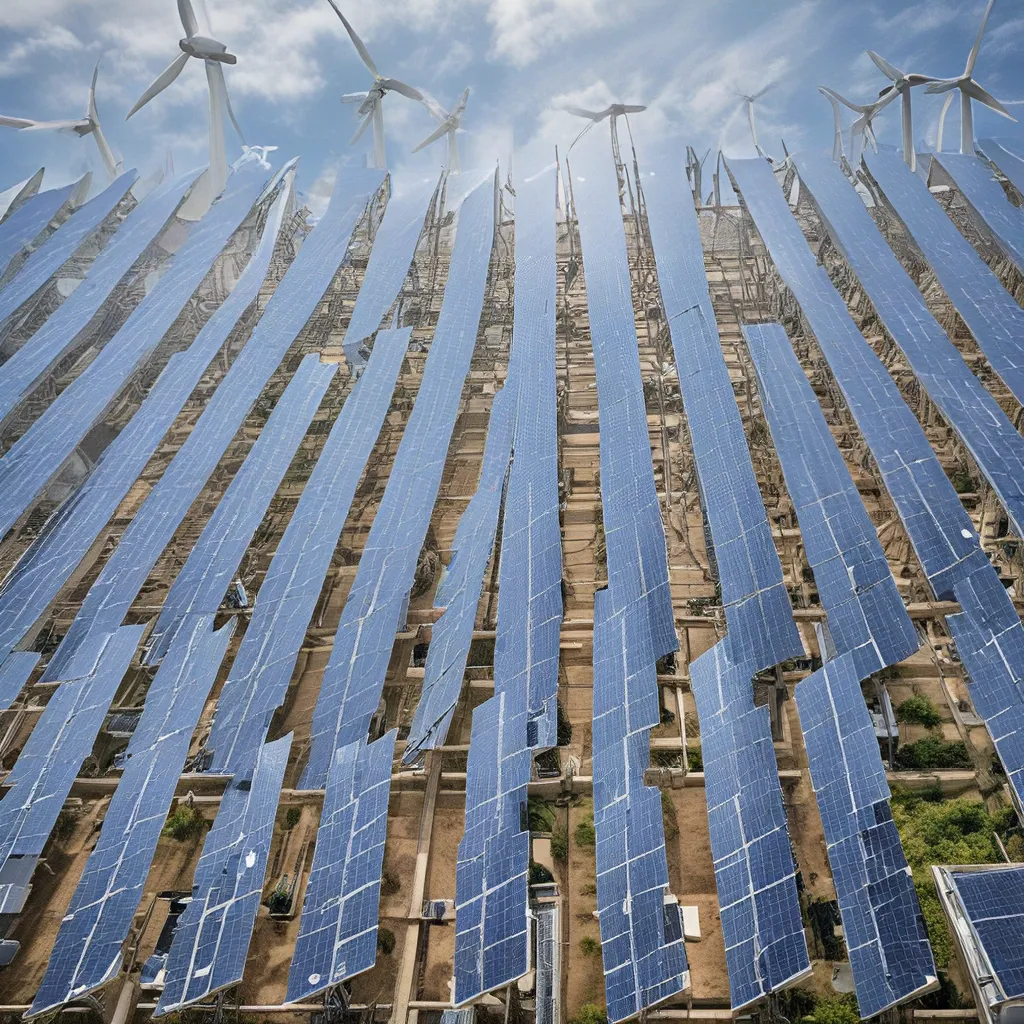
Ah, the city – the beating heart of modern civilization, bustling with life, innovation, and ever-increasing energy demands. As our world becomes increasingly urbanized, the race is on to transform these concrete jungles into sustainable oases, powered by the renewable energy of the future. And let me tell you, my friends, the future is looking brighter than ever!
The Urban Energy Challenge: Balancing Growth and Sustainability
It’s no secret that cities are the engines of economic growth and innovation, responsible for generating over 80% of global GDP. But with great power comes great responsibility, and our urban landscapes are feeling the strain. From climate change and population growth to aging infrastructure and resource depletion, our natural and built environments are being pushed to their limits.
Yet, amidst these daunting challenges lies a glimmer of hope. Urban energy systems can play a critical role in supporting resilience and prosperity, enabling cities to adapt to changing circumstances and thrive in the face of uncertainty. The key, my friends, lies in harnessing the power of renewable energy and developing smarter, more sustainable urban energy systems.
Renewable Energy: The Path to a Greener, More Resilient City
As the world grapples with the dire consequences of climate change, the urgency to transition to clean, renewable energy sources has never been more apparent. And let me tell you, the cities of today are leading the charge!
From Amsterdam’s ambitious goal of becoming carbon-neutral by 2040 to Aspen, Colorado’s pledge to use 100% renewable energy by 2015, municipalities are stepping up and embracing the power of the sun, wind, and water. These forward-thinking cities are not only reducing their carbon footprint but also reaping the benefits of greater energy security, cost savings, and improved public health.
But the journey towards a sustainable urban future is not without its challenges. The 2022 energy crisis in Europe and the ever-present threat of power outages in the US have highlighted the fragility of our current energy systems. And with cities contributing to a staggering 75% of global carbon emissions, the question remains: are we doing enough?
The answer, my friends, lies in a holistic approach to urban energy planning, one that recognizes the interconnected nature of the climate, energy transition, societal welfare, and spatial limitations. By embracing innovative technologies like smart grids, energy storage systems, and decentralized energy production, cities can strike a delicate balance between meeting the growing demand for electricity and reducing their environmental impact.
The Rise of the Sustainable City: Powering Progress through Collaboration
But transforming a city into a renewable energy powerhouse is no easy feat. It requires a collaborative effort from all stakeholders, from local governments and the private sector to academic institutions and citizens.
Take the example of the RAI Convention Center in the Netherlands. By partnering with various organizations and aligning their sustainability vision, they’ve embarked on a journey towards carbon neutrality, eventually aiming to become a self-sufficient energy system that benefits the entire community.
And it’s not just the big players who are making a difference. In the UK, the City of Wolverhampton Council teamed up with the Royal Wolverhampton NHS Trust to build a solar farm powering their local hospital, making it the first in England to be fully powered by renewable energy. Talk about leading by example!
But the road to a sustainable urban future is not without its obstacles. Outdated policies, bureaucratic red tape, and a lack of financial support can all hinder the progress of vital renewable energy initiatives. That’s why bold leadership, political courage, and a diverse range of perspectives are crucial in driving the systemic change we need.
Empowering the Sustainable City: From Citizen Engagement to Circular Economy
As the saying goes, “change starts from within.” And when it comes to transforming our cities into sustainable oases, the power of the people cannot be underestimated.
By encouraging citizens to adopt energy-saving behaviors and providing them with the tools to get involved, cities can ignite a grassroots movement towards a greener future. The Arcadis Noise App, for instance, empowers local residents to voice their concerns about the impact of wind turbines, fostering a sense of ownership and buy-in for renewable energy projects.
But the journey towards sustainability doesn’t stop at individual actions. Cities must also embrace the principles of the circular economy, where waste is minimized, resources are reused, and the environmental impact is reduced. Take the BENEFRICHES tool developed by Arcadis, ADEME, and Efficacity – it’s helping communities and stakeholders make more sustainable decisions in urban planning and development.
And let’s not forget the power of public-private partnerships. By bringing together the expertise and resources of various sectors, cities can create living laboratories and pilot programs that showcase innovative solutions and accelerate the transition to a sustainable energy future.
So, my friends, the path to a renewable-powered, sustainable city may be long and winding, but the rewards are well worth the journey. By embracing collaboration, innovation, and the collective power of citizens, we can transform our urban landscapes into vibrant, resilient oases that not only meet the energy demands of the future but also safeguard the health of our planet.
And who knows, maybe one day, you’ll be able to visit Plug n’ Save Energy Products in your very own sustainable city, where the energy-saving solutions of the future power our daily lives. The future is bright, my friends, and it’s up to us to seize it.